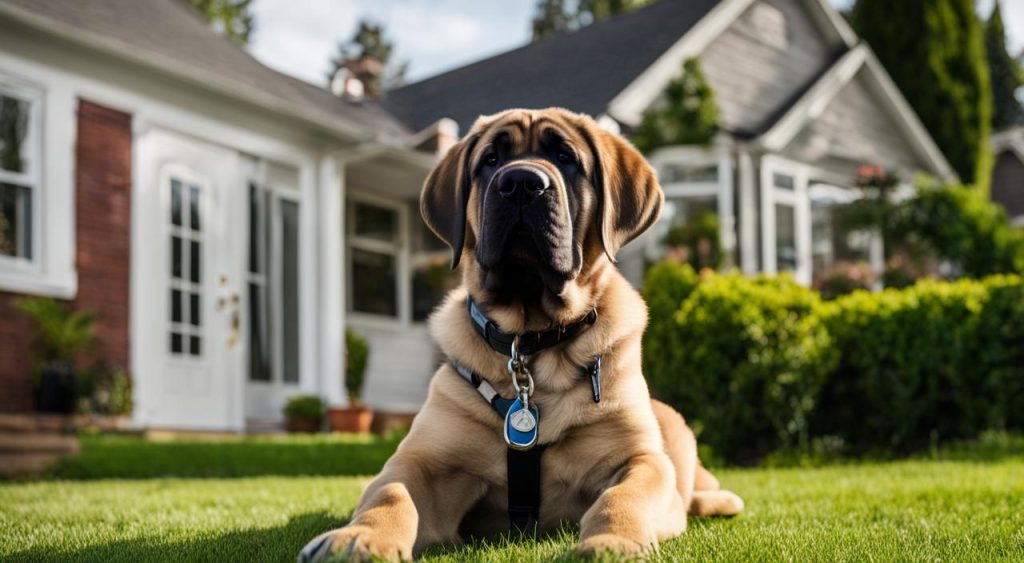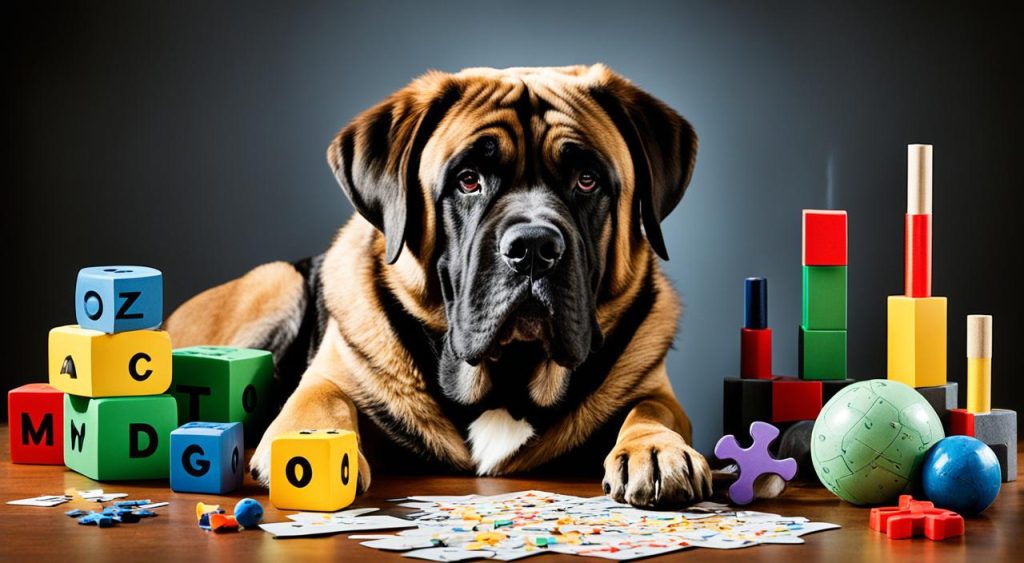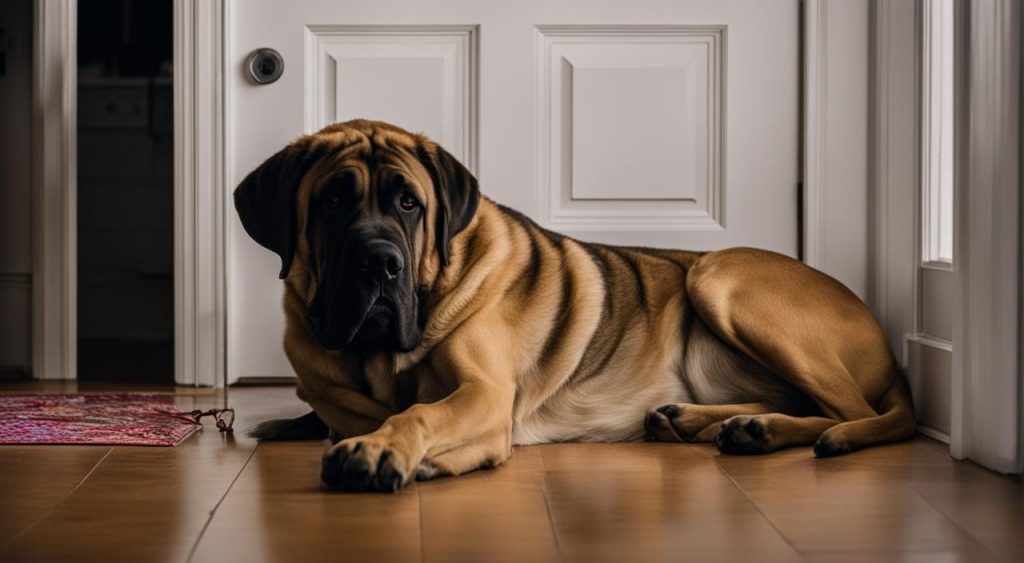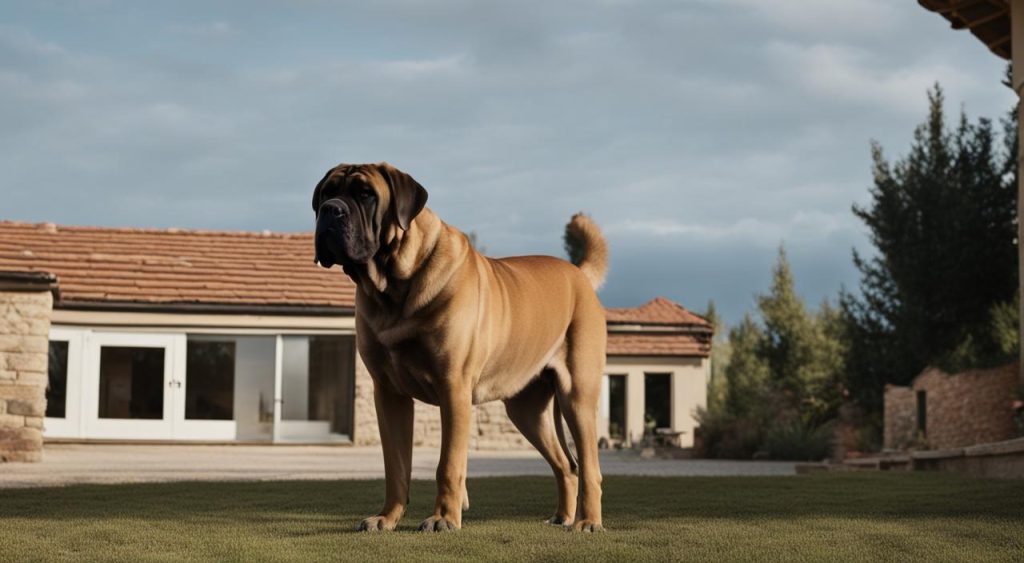House training any puppy can be challenging, especially when it’s a large and stubborn breed like the Mastiff. However, with the right approach and consistent training, it is possible to successfully house train a Mastiff puppy. Some effective methods include crate training, establishing a routine, using positive reinforcement, and being patient and consistent. It’s important to understand the breed’s characteristics and adjust the training methods accordingly. And while house training a Mastiff may require more time and effort compared to smaller breeds, the rewards of having a well-trained and well-behaved Mastiff companion make it all worthwhile.
Key Takeaways:
- Mastiffs can be challenging to house train due to their size and stubbornness.
- Crate training is an effective method for house training a Mastiff.
- Establishing a routine and using positive reinforcement are crucial for successful Mastiff house training.
- Understanding the breed’s characteristics and adjusting the training methods accordingly is important.
- Patience and consistency are key when house training a Mastiff.
Tips for House Training a Mastiff
House training a Mastiff can be a challenging task, but with the right approach and consistency, you can ensure success. Here are some effective tips to help you house train your Mastiff puppy:
Start early
Begin your Mastiff’s house training as soon as you bring them home, ideally around 8 to 12 weeks of age. This is the best time to establish good habits and prevent accidents in the future.
Create a routine
Establish a consistent routine for your Mastiff’s potty breaks. Take them outside to their designated bathroom area at regular intervals throughout the day, such as after meals, naps, and playtime. This helps them learn when and where they should go potty.
Use positive reinforcement
When your Mastiff successfully eliminates outside, praise and reward them with treats or verbal praise. Positive reinforcement helps them associate going potty outside with a positive experience, making them more likely to repeat the behavior.
Be patient and consistent
House training takes time and patience. Accidents may happen, but it’s important to remain calm and avoid punishment. Instead, clean up accidents promptly and continue with consistent training. With time, your Mastiff will understand what is expected of them.
By following these tips and staying dedicated to the process, you can effectively house train your Mastiff and establish good potty habits that will benefit both of you in the long run.
Conclusion
House training a Mastiff can be a challenging task, but don’t be discouraged. With patience, consistency, and positive reinforcement, you can successfully train your Mastiff to be a well-behaved and potty-trained companion.
Start the training process early, preferably when your Mastiff is between 8 to 12 weeks old. Establish a routine that includes regular potty breaks outside. Mastiffs have their own unique body language, so pay close attention to their behavior and cues to anticipate their needs.
Remember, accidents will happen, especially during the initial stages of training. Stay calm and avoid punishment, since it can hinder their progress. Instead, focus on rewarding your Mastiff with treats or praise when they eliminate in the appropriate spot.
With time and effort, your Mastiff will learn to associate going potty with outside and establish good habits that will last a lifetime. So, stay committed, be patient, and enjoy the journey of house training your beloved Mastiff. Before you know it, they will become a well-mannered and well-trained member of your family.





